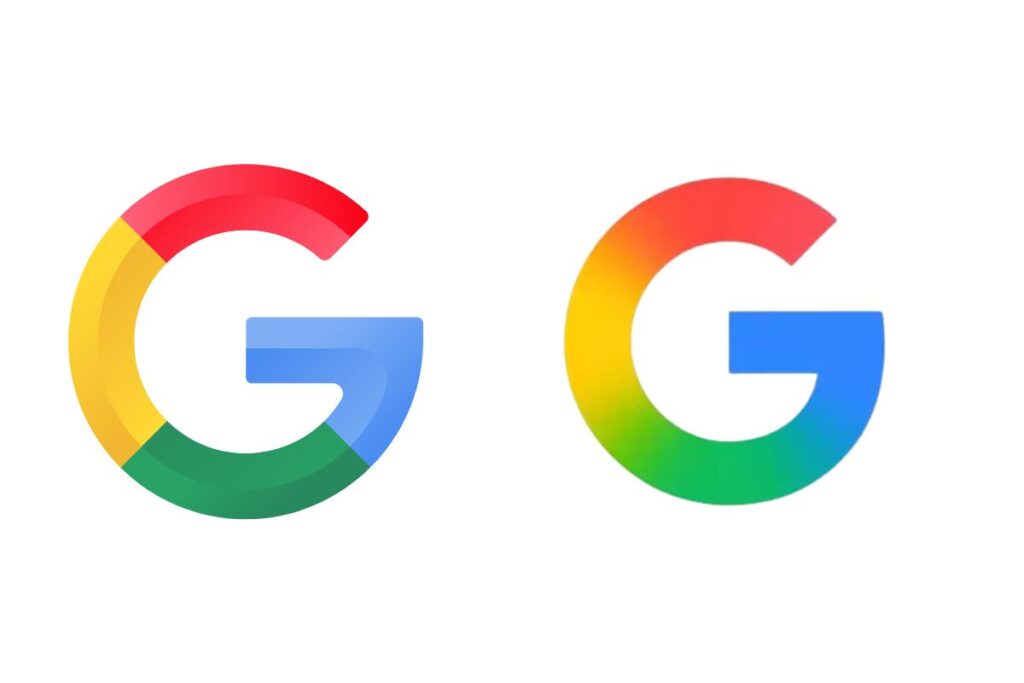
In a move that has taken the digital world by storm, Google has updated its iconic ‘G’ logo—a transformation that comes after a decade of consistency in its visual identity. This change is not just aesthetic but is strategically aligned with Google’s broader shift towards AI-driven user experiences, minimalism, and mobile-first design standards. As one of the most recognized symbols in tech history, even the smallest tweak in Google’s branding commands attention across the internet.
Why Google Changed Its Icon After 10 Years
The previous ‘G’ icon—an unmistakable four-color representation of Google’s brand—served as a compact identity badge across browsers, apps, and mobile devices. So, why alter something so deeply ingrained in global digital culture?
Google stated that the new icon represents a more inclusive, accessible, and modern design philosophy. As Google’s services evolve to include a wider range of AI, machine learning, and voice-integrated technologies, this new logo helps align all product visuals with the future-forward branding approach.
Design Evolution: What’s New in the ‘G’ Icon
The new ‘G’ icon retains the original red, blue, yellow, and green colors, but with subtle yet impactful modifications:
- Sleeker Lines and Modern Geometry: The curves and arcs of the new ‘G’ are cleaner and more symmetrical, aligning with Material Design 3.0 aesthetics.
- Better Scalability: The icon has been optimized to look sharper on all screen sizes—from large desktops to small smartwatches.
- Enhanced Accessibility: Google has reworked the contrast and hue saturation to ensure visibility for users with visual impairments.
This change is a prime example of microbranding—small design tweaks with large psychological and branding impact.
Keyword Spotlight: Google Logo Update 2025
To better understand the impact and optimize your own content strategy, let’s focus on SEO keywords that are trending around this update:
- Google new G icon 2025
- Google logo update
- Why did Google change its logo
- Google icon redesign
- Google brand update 2025
- New Google favicon
- Google’s material design logo
Integrating these SEO-rich keywords in blog content, alt texts, and meta tags can help websites capitalize on the current buzz.
Google’s Branding Strategy: Simplicity Meets Innovation
The revamped ‘G’ icon is part of a broader shift in Google’s design language across its ecosystem, including:
- Gmail
- Google Maps
- Google Workspace
- Google Chrome
With these changes, Google is creating a consistent and future-ready visual identity that reflects its AI-forward philosophy. This move also ensures that the branding stays intuitive for users across devices, cultures, and age groups.
How the New ‘G’ Icon Aligns with Google’s AI Vision
The ‘G’ redesign is more than just a graphic update—it mirrors Google’s strategic push toward artificial intelligence integration. Google Bard, Gemini, and Search Generative Experience (SGE) are all built around cleaner UIs and smarter interfaces, and the new icon embodies this evolution.
The design is meant to visually resonate with speed, innovation, personalization, and minimalistic intelligence, which are the core themes of Google’s AI-driven product development.
Impact on Digital Marketing and SEO
For marketers, designers, and SEO professionals, Google’s rebranding signals a powerful cue:
- Update your brand visuals: If Google is moving towards sleeker, bolder, and cleaner icons, so should you.
- Capitalize on trending searches: Create content around “Google logo update 2025” and “Google favicon change.”
- Enhance mobile responsiveness: Google’s icon redesign underscores its continued focus on mobile-first indexing.
User Reactions and Community Feedback
While some users noticed the change immediately, others were confused by the subtle shift. Feedback across Reddit, X (formerly Twitter), and LinkedIn ranges from nostalgic disappointment to design praise.
Designers praised the enhanced readability and accessibility. Users, however, expressed concern over “changing something iconic.” But this emotional dissonance often happens during brand evolution, and Google is no stranger to navigating public perception expertly.
Comparing Old vs. New: A Visual Analysis
Let’s break down a side-by-side comparison of the old and new icons:
| Feature | Old Icon | New Icon |
| Color Scheme | Red, Green, Yellow, Blue | Same, but with deeper contrast |
| Shape | Rounded Serif ‘G’ | Balanced Geometric ‘G’ |
| Design Standard | Flat Design | Material Design 3.0 |
| Screen Optimization | Moderate | High |
| Accessibility Compliance | Minimal | Enhanced Contrast & Sharpness |
This comparison underlines that the change is not just cosmetic but functional and future-oriented.
SEO Optimization: Meta Title and Description
Meta Title:
Google Updates Its Iconic ‘G’ Logo After 10 Years | Latest Design in 2025
Meta Description:
Google unveils its new ‘G’ icon for the first time in a decade, signaling a shift toward minimalism, AI integration, and modern design standards. Discover all the changes now.
How Brands Can Learn from Google’s Design Evolution
This update serves as a masterclass in brand consistency and innovation. Businesses can take away several lessons:
- Adapt or Stay Behind – Design evolves. Failing to modernize can make brands appear outdated.
- Think Multi-Platform – Icons and logos should scale and remain crisp across screens and sizes.
- Stay Accessible – Prioritize color contrast, screen adaptability, and user experience.
- Align Design with Tech Trends – As AI becomes mainstream, design must reflect intelligence and simplicity.
Conclusion: Google’s Iconic ‘G’ Gets Smarter, Bolder, Better
Google’s decision to redesign its ‘G’ icon after a decade isn’t merely a cosmetic facelift—it’s a strategic alignment with the future of digital interaction. With minimalism, accessibility, and AI-readiness baked into the design, the new icon reaffirms Google’s position at the forefront of tech innovation.Whether you’re a designer, SEO expert, brand strategist, or everyday internet user, this change impacts the way we see, experience, and trust Google’s products across the web.
